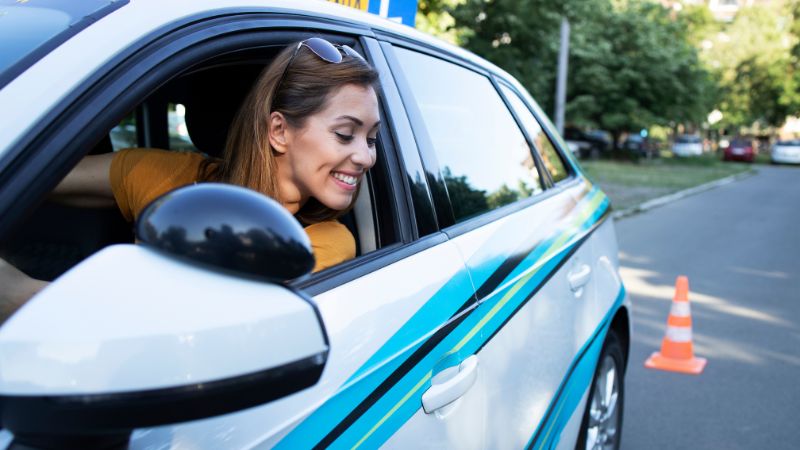We’ve all been faced with the struggle to back into a parking spot.
While others have mastered the art, some of us are still left wondering what there is to it.
We’ve got you covered.
Here, we’ll cover the essential reverse parking tips. This way, you can become a pro at it with enough practice.
We’ll also cover why it’s safer and more accessible to park this way.
So, without further ado, let’s dive right into the article!
When Do You Have to Park in Reverse?

Before we get into the tips, we should answer this question first.
More and more parking areas have implemented the “park facing the driveway” rule. We have to reverse park in more establishments than ever before.
That’s already a strong reason to learn how to reverse park.
And it’s not just that.
Sometimes, the only available parking is on side streets. This calls for significant reverse parking for proper positioning.
As you can see, reverse parking is something you can’t avoid.
So it’s an essential skill that you must master.
9 Reverse Parking Tips to Help You
When reverse parking, there are 9 very helpful tips to think about.
Let’s look at this…
Tip #1. Drive Halfway Through the Empty Spot
If you want a good calculation for your reverse turn, pass the empty spot halfway.
Also, observe at least twelve inches of space between your vehicle and those parked adjacent to the empty spot.
Tip #2. Check Your Side-View and Rear-View Mirrors Frequently
If you want to make sure you don’t bump any car, always check your mirrors. If you feel like you’re too close already, you should adjust your position by going forward.
If you have rear-facing cameras, then it will be a lot easier for you.
Tip #3. Go Smoothly
Don’t slam on the accelerator pedal and then the brake pedal.
Instead, go slowly and smoothly.
If you’re still inexperienced, it’s better to take all the time you need. Go as slowly as possible.
Tip #4. Always Listen to Your Car’s Sensors
If your vehicle is equipped with backing sensors, then it’ll be a lot easier.
Once it starts to sound rapidly, that means you’re already too close to something behind you. If the beeping is still slow, you can still back up some more.
If your car doesn’t have audiovisual sensors, you can purchase some to integrate into the rear and sides of your car.
Tip #5. Alternate Between Going Forward and Reversing as Much as You Need
As we said — there’s no need to rush.
Go forward and backward as many times as you need.
The more you do it, the better you will be able to gauge your car’s position in the future.
But for now, do as much repositioning until you get the perfect angle.
Tip #6. Remember to Leave Enough Space for Both Cars on Either Side
Don’t be that person.
Always consider your fellow drivers when parking your vehicle next to others.
Not just that, but parking too close will also give you a difficult time getting out.
Tip #7. Always Park Between the Lines
What if there are no cars next to your parking spot?
Well, you can always use the lines as indicators of where to properly place your car.
It’s also a good idea to do this so other vehicles can park beside you.
Tip #8. Close Your Side Mirrors When You’re Already Parked
Just because you’re very careful when you reverse park doesn’t mean others are.
This is why folding your side mirrors can help lessen the risk of your car getting hit by other vehicles parking on either side.
Tip #9. Practice Makes Perfect
Reverse parking isn’t so hard if you’re just slow and careful.
However, if you are reverse parking into a parallel spot, that’s a little trickier.
You can only get it right if you keep practicing it. No amount of theory will help you here.
So just keep practicing – and using the other tips we mentioned here.
You’ll get there eventually.
Reverse Parking Do’s and Don’ts
Besides the tips we mentioned above, here are some other do’s and don’ts:
- First and foremost, you must familiarize yourself with your car and identify viable spots based on its dimensions.
Don’t back into areas too small to fit into, even when you think you can. Don’t want to risk it.
- Second, never forget that when your vehicle is in reverse, whichever direction you turn your wheel, your car will move opposite to it.
- Last, but not least, don’t forget to maintain at least one to two feet of space parallel to parked cars between your vehicle.
Why Should We Park in Reverse?
If you are still wary about reverse parking, let’s discuss it more in-depth.
Some say parking in reverse is more accessible once you get the hang of things.
I mean, when you have to leave, you can just drive out of the spot without reversing.
It’s also safer for other drivers and pedestrians inside a parking area. This is because, when you get in your car to leave, you can see each pedestrian and vehicle in your car’s trajectory.
If you have to reverse to leave your spot, checking your surroundings will be harder when facing away from the driveway.
Yes, reversing into a parking spot is safer than reversing out of it.
So even if reverse parking is not required — it’s still best to do it for these reasons alone.
Final Words
So those were the reverse parking tips that will help you master the maneuver.
It’s hard at first.
We know.
But as you keep practicing, and following the tips, you’re sure to get it right.
And pretty soon, you’ll be reverse parking like a pro — being able to get it in one shot and don’t have to go so slowly.
Overall, we highly recommend that you just KEEP PRACTICING.
You’ll get there one way or another.
Good luck!
